
I will be camping in the mofussil until June 7. You can find me at the dak bungalow. Or leave a message with the khidmatgar.
CHENNAI IS an oven in April, a furnace in May. No afternoon sea breeze respite for inner city dwellers either, the concrete jungle seals all entries. The baked roads and tree-robbed avenues are a blur of dust and traffic fumes. Splashing your face for the hundredth time with warm water from the tap, you wonder yet again just how you are going to survive the cruel weeks to come.
"Anything to distract me as I'm broiled alive," my cousin sighs. I respond hesitantly, "Coconut water? Buttermilk? Watermelon juice? New mocktails for the season bursting into print everyday? Khadi? Mangalgiri? Kanchi cotton? We are swamped by summer sales." Her scorn is too deep for rebuttal. But she says pensively, "Remember how we learnt rhymes during summer vacations? We didn't notice the heat then, did we."
Those were the days when our canny Grandma set the dozen children of her joint family to learn long verses by heart through the blazing noons of May. The best recitation of each day won a fistful of sugar candy. Often Grandma herself reeled off riddle rhymes, and taught indoor games, each with its own string of verses — "pallankuzhi" on wooden board with slots for the shell counters, "ammanai" to juggle little silver balls, and "othaiya-rettaiya", a guessing game with tamarind seeds. We built up our stock of poetry (!) then. Our `era' was innocent of television and computer screens. Plays and `talkies' were rare treats. The mandatory family entertainment was to yank some child out of the throng, and have him or her recite Kural and Athi Choodi, or the rousing verses of Subrahmanya Bharati. (more)

Thamizh has 247 - and anyone thinking of developing the game in other vernaculars will have to deal with 468 (excluding compound letters) in Hindi, 385 in Bengali 523, or so in Telugu, 507, or so in Kannada, 68 in Malayalam, and 374 in each of Gujarati and Marathi!(more)
Everyone in Bombay goes out for dinner. Then they go to Muchhad (pron. MOOCH-ard) Paanwala and eat paan, he has his own website, he sits all day in dhoti with a so-big moustache. Then the whole city goes bowling, or they play billiards. They’re all talking on their cell phones, from the age of eleven onward. Then they go to bed. Bombay is like that.
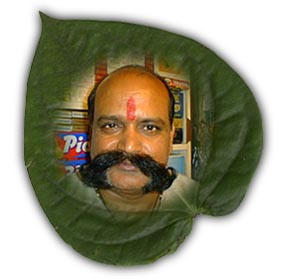
His father Shyam Charan Tiwari established the shop thirty years ago. The shop was named Muchhad because his father Shyam Charan Tiwari had mustache so big and long that it touched his ears. And now it's become a family tradition, all the four brothers have long mustache...
They believe and treat their customers like God. They keep personal and family like relations with their customers and believe in giving the best service to them. And all the ingredients that they use are very pure and genuine without any mixing...
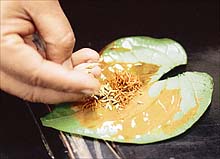


... In the boxes are two metal cups to contain kathha and lime, and three smaller, equal-sized receptacles for cut nuts of various kinds. All of these are arranged in a circle, in the middle of which is another small container to hold cardamoms or cloves... There are tiny spoons for the kathha and lime... Placed over all these containers is a large tray... in which raw betel leaves are placed, wrapped in a damp cloth....
The size [of the paandaan] began to increase until it came to weigh as much as twenty to forty pounds. At the same time it became necessary for ladies to take it with them wherever they went. Just as ‘the larger the turban, the greater the learning,’ so the larger the betel box, the greater was the status and grandeur of the lady. Eventually the betel box took up all the space in the palanquin and there was no room for the lady...

photo by Ramesh Gandhi
May that victorious moment of the Buddha save you
when the soldier Mara, weapons rendered impotent,
screwed up his courage to that pitch
where, angry, he would swallow up the sacred head,
but then within a jewel of the wondrous crown
did see his own wide-open-mouthed reflection,
at sight of which his courage failed.--Sri Pasavarman
For whom the thousand shining eyes
of Indra falling at his lotus feet,
fulfill the rite of offering
a wreath of dark blue waterlilies;
for whom the rays of wondrous light
from diadems of prostrate gods
compose a new and saintly robe; may he,
the Sakya Saint, protect you.--Vasukalpa
Kappiyarrukkappiyanar: on
Kalankaykkanni Narmuticceral
Patirruppattu 35
Vanparanar
Purananuru 255
 Then, on Woods Lot, another Colossus, from Burning Man:
Then, on Woods Lot, another Colossus, from Burning Man:
 Last night I dreamed that the cyclone had hit us. I went to the ocean and saw waves raised and static, like a mountain range, or a field of icebergs: jagged shapes in shades of pale and paler grey. In the spaces between them the water was almost flat, and shone with silvery light. There was no sun, the sky was also shades of grey, but rounded with clouds, in contrast to the jagged sea.
Last night I dreamed that the cyclone had hit us. I went to the ocean and saw waves raised and static, like a mountain range, or a field of icebergs: jagged shapes in shades of pale and paler grey. In the spaces between them the water was almost flat, and shone with silvery light. There was no sun, the sky was also shades of grey, but rounded with clouds, in contrast to the jagged sea.
Shiva temple, Bhowanipore

cartman

mosque, Bhowanipore

living on the footpath
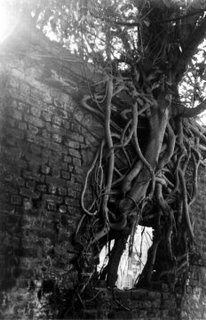
pipal tree

vegetable vendors

an office behind Park Street


of the mountain slopesTevakulattar
where bees make rich honey
from the flowers of the kurinci
that has such black stalks.
The kurinci flower and the mountain scene clearly mark this as a kurinci poem about lovers’ union. The union is not described or talked about; it is enacted by the “inset” scene of the bees making honey from the flowers of the kurinci. The lover is not only the lord of the mountain; he is like the mountain he owns. Describing the scene describes his passion. The kurinci, being a plant that takes about twelve years to come to flower, carries a suggestion assimilating the tree to the young tropical heroine who speaks the poem…
Furthermore, the poem opens with large abstractions about her love: her love is bigger than earth and higher than the sky. But it moves toward the concreteness of the blackstalked kurinci, acting out by analogue the virgin’s progress from abstraction to experience. .. This progression (from the basic cosmic elements to the specific component of a landscape) is also the method of the entire intellectual framework behind the poetry: moving from first elements to native elements to human feelings…
this slip of a girlCatti Natanar
her teeth like sprouts of new rice
her wrists stacked with bangles
troubles me.

Public Call Office, C P Ramaswamy Road, Chennai

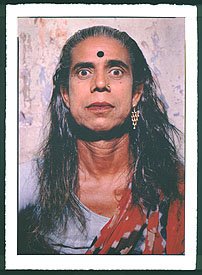

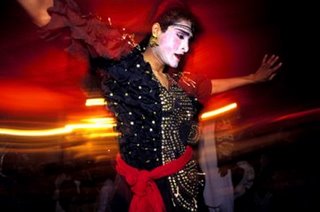
Mercury touches 40°C in Chennai
CHENNAI: For the past three days, Chennai has been feeling the heat. With the onset of agni nakshathiram or kathri veyyil on May 4, city residents have been sweating it out.
The phase is expected to last till June 1. And Chennaiites are finding various ways to beat the heat. In Parry’s Corner, you can find tender cucumbers a major hit with bus commuters. Most tea stalls are doing brisk business selling ‘Ice Moru’ (iced buttermilk) to thirsty customers. At several busy junctions, watermelon juice is being sold for Rs 5....


The homelands of the Indo-European languages stretch from Dublin to Delhi. But Hadza, a tongue that is one of a kind, is spoken by just 1,000 people near Lake Eyasi in Tanzania. Why do the world's languages have so uneven a distribution pattern?
…
The invention of agriculture has long been invoked to explain the spread of the Indo-European languages. Now, Dr. Jared Diamond of the University of California at Los Angeles and Dr. Peter Bellwood of the Australian National University in Canberra have applied the concept to 15 major language families. Their article appeared in the April 25 issue of Science.
The premise is that when humans lived as hunters and gatherers, their populations were small, because wild game and berries can support only so many people. But after an agriculture system was devised, populations expanded, displacing the hunter-gatherers around them and taking their language with them.
On this theory, whatever language happened to be spoken in a region where a crop plant was domesticated expanded along with the farmers who spoke it.
Even if the farmers interbred with the hunter-gatherers whose land they took over, genes can mix, but languages cannot. So the hunter-gatherers would in many cases have adopted the farmers' language. That is why languages "record these processes of demographic expansion more clearly than the genes," Dr. Bellwood said.
…
Just as China was a powerhouse of new language families in the East, the Fertile Crescent, the arc running through Lebanon and through Iraq, was the source of at least three major language families in the West, the authors say.
One was Dravidian, a language family now centered on southern India. A second was the Indo-European family, which includes English, French and German in its Western branch and Iranian and Hindi in its Eastern branches. A third may have been Afro-Asiatic, a family that includes ancient Egyptian and Semitic languages like Arabic and Hebrew.…

The climate of Madras [Chennai] has been described with considerable accuracy as three months hot and nine months hotter.
 I’ve been reading A. K. Ramanujan’s Poems of Love and War, about Tamil poetry of the Sangam period (c. 150 BC – 250 AD). These ancient poets divided the year into six seasons:
I’ve been reading A. K. Ramanujan’s Poems of Love and War, about Tamil poetry of the Sangam period (c. 150 BC – 250 AD). These ancient poets divided the year into six seasons:
Agni is one of the most important of the Vedic gods. He is the god of fire, the messenger of the gods, the acceptor of sacrifice. Agni is in everyone's hearth; he is the vital spark of life, and so a part of him is in all living things; he is the fire which consumes food in peoples' stomachs, as well as the fire which consumes the offerings to the gods. He is the fire of the sun, in the lightening bolt, and in the smoke column which holds up the heavens. The stars are sparks from his flame. He was so important to the ancient Indians that 200 hymns in the Rig Veda are addressed to him, and eight of its ten books begin with praises dedicated to him. When Agni is described in anthropomorphic form, he sometimes has two faces which are smeared with butter. He has seven fiery tongues and sharpened, golden teeth. He is red in color, with black eyes and wild, black hair. He has seven arms and three legs, and seven rays of light emanate from his body. He either rides on a ram, or on a chariot, pulled by goats or sometimes parrots. (more)
 A couple of years ago I tried my hand at writing Sapphic stanzas. This one is for Agni Nakshetram:
A couple of years ago I tried my hand at writing Sapphic stanzas. This one is for Agni Nakshetram:Hot Season
The City police today claimed to have cracked the mystery behind the murder of a woman resident of New Street in Mylapore… 34-year old Vidya was found in her home with her neck slashed on January 7… Vidya’s sister told the police that a local rowdy, ‘Naina’ Suresh was seen regularly with the victim in the recent past as she had to pay Rs. 20,000 demanded by him…One of my favourite Indian-English words is ‘rowdy,’ along with its extended version, ‘rowdy sheeter.’ Whenever police see a potential for civil disturbance – on the eve of elections, for example – they round up the rowdy sheeters (people who have a police record for petty crimes). Last year a group of Chennai rowdy sheeters took a public oath to reform, and were removed from the rowdy sheeters’ list. Critics claimed that only the most aged and inactive rowdies participated in the ceremony.
Police made inquiries on the life style of Vidya… Vidya had a luxurious life style and for keeping the cash flow, she was into a bit of the flesh trade too.
She used the services of autorickshaw driver Barani Kumar to act as a pimp…. In the process, she earned the friendship of vegetable merchant Padmanabhan.
The two developed an intimate relationship and Vidya was bold enough to even go to the residence of Padmanabhan at Alwarpet and knock his door at odd hours and to insult the merchant in front of his wedded wife.
Padmanabhan made up his mind to do away with her….

When he's shooting a film, Adoor Gopalakrishnan, 62, doesn't listen to his actors, critics or the government, nor does he pander to his audience. He does, however, listen to the wind. While shooting his latest film, Shadow Kill, the story of an anguished hangman in 1940s India, Adoor was struck by the thumping sound of nighttime gusts playing on the leaves of a palmyra tree near his set in a rural Kerala village. "It sounded exactly like a heartbeat," he says. It was the rhythm he hadn't been aware he was seeking—a steady drumming, and a reminder of nature's indifference to his characters' troubled passions. "I made the wind a character in my film," Adoor explains. That's perfect casting for an Adoor film: the wind here is gentle and understated—and it's highly unlikely to challenge the director's interpretation of its role. (more)Two of his best films - The Walls (Mathilukal) (1990) and, even more remarkable, The Servile (Vidheyan) (1994), were made with Mammootty, one of the great stars of Malayalam cinema.
 I saw Mammootty once. We were driving home from dinner on the Marina road around midnight. On the beach we saw the bright lights of a film shooting (it was NOT an art film -- pure masala).
I saw Mammootty once. We were driving home from dinner on the Marina road around midnight. On the beach we saw the bright lights of a film shooting (it was NOT an art film -- pure masala).A corruption of the Skt. Jagannaatha, 'Lord of the Universe,' a name of Krishna worshipped as Vishnu at the famous shrine of Puri in Orissa… The idol was, and is, annually dragged forth in procession on a monstrous car, and as masses of excited pilgrims crowded round to drag or accompany it, accidents occurred. Occasionally also persons, sometimes sufferers from painful disease, cast themselves before the advancing wheels…
c. 1321. -- "Annually on the recurrence of the day when that idol was made, the folk of the country come and take it down, and put it on a fine chariot; and then the King and Queen, and the whole body of the people, join together and draw it forth from the church with loud singing of songs, and all kinds of music . . . and many pilgrims who have come to this feast cast themselves under the chariot, so that its wheels may go over them, saying that they desire to die for their god. And the car passes over them, and crushes them, and cuts them in sunder, and so they perish on the spot." -- Friar Odoric, in Cathay, &c. i. 83. (lots more)
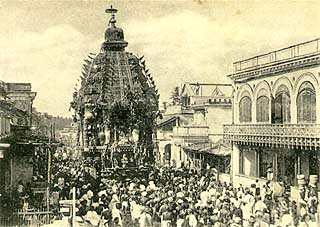

"Devotees in India Sacrificing Themselves to the Idol Juggernaut"; wood engraving; 19th century.